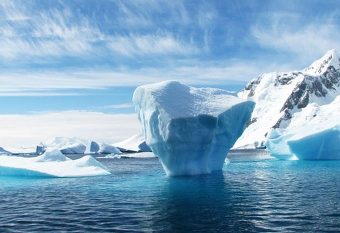
Now that a couple of weeks have passed since the Larsen C ice shelf calved one of the largest icebergs of all time (observed by humans over the last few hundred years, that is), researchers have had some time to investigate what exactly has happened since then. There are interesting things to report.
As expected, the iceberg calving event — which saw the Larsen C ice shelf lose 10% of its total area — was accompanied by the calving of some 11 other icebergs. Despite being considerably smaller than the largest one, these were still up to 13 kilometers long.
Interestingly, the remaining cracks in the ice shelf, from amongst those that precluded the calving event, have continued growing.
Dr Anna Hogg, an ESA Research Fellow in the Centre for Polar Observation and Modelling (CPOM) at the University of Leeds, commented: “The satellite images reveal a lot of continuing action on Larsen-C Ice Shelf. We can see that the remaining cracks continue to grow towards a feature called Bawden Ice Rise, which provides important structural support for the remaining ice shelf.
“If an ice shelf loses contact with the ice rise, either through sustained thinning or a large iceberg calving event, it can prompt a significant acceleration in ice speed, and possibly further destabilisation. It looks like the Larsen-C story might not be over yet.”
As a reminder, following a similar event that saw the calving of a large iceberg back in 2002, the Larsen B ice shelf completely collapsed over a relatively short period of time — the calving event serving as the destabilization that set the whole collapse in motion.
Here’s more from an email sent to CleanTechnica: “Since the 12 July 2017 breakaway Dr Anna Hogg, from the University of Leeds and Dr Hilmar Gudmundsson, from the British Antarctic Survey (BAS), have continued to track the iceberg — known as A68 — using the European Space Agency (ESA) and European Commission’s Copernicus Sentinel-1 satellite.
“Their observations show that since the calving event, the berg has started to drift away from the Larsen-C, with open ocean clearly visible in the ~5 kilometer gap between the berg and the ice-shelf.
“Ice-shelf retreat on the Antarctic Peninsula, has been observed throughout the satellite era — about 50 years. Large sections of the Larsen Ice Shelf A and B, and the Wilkins1 ice-shelf collapsed in a matter of days in 1995, 2002, and 2008, respectively. Geological evidence suggests that ice-shelf decay of this magnitude is not unprecedented, however, prior to 2002 the Larsen-B ice shelf remained intact for the last 11,000 years.”
Source: businessgreen.com



